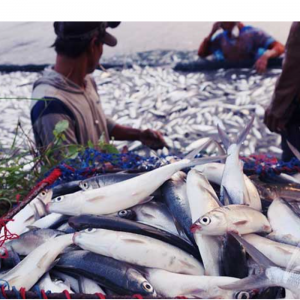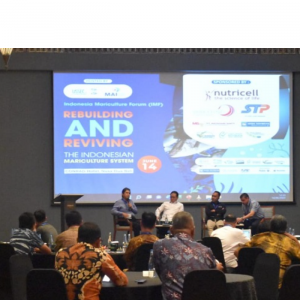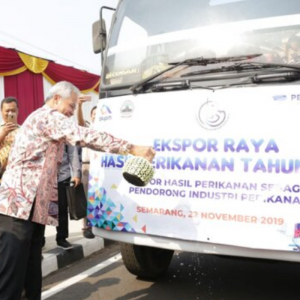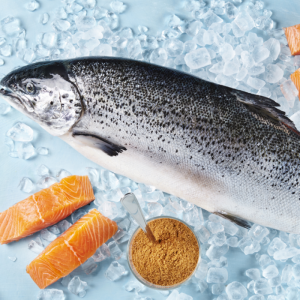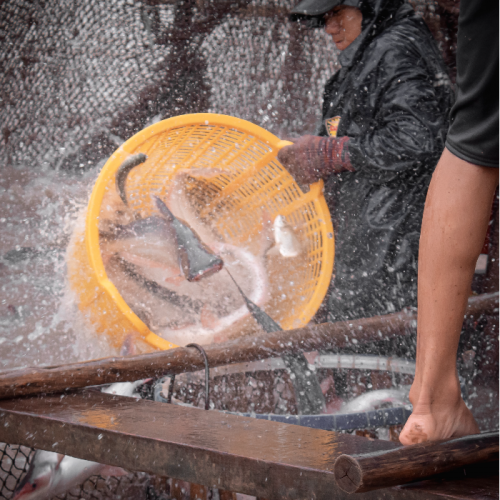
The Workforce Needed to Support Future Growth of Aquaculture
| Mon, 30 Aug 2021 - 11:10
Aquaculture will need to continue to grow to meet the growing needs of the global human population. All productive enterprises need the proper combination of inputs required for a successful business. These include natural resources such as land and water, capital to construct the necessary production facilities and associated buildings, and purchase the necessary equipment and operating inputs.
Economists include management as an essential input for production because the decisions made by the manager are as essential to the success of the farm as are feed for the animals and electricity for aeration. Finally, all productive enterprises require an adequate quantity and quality of labor inputs to be successful.
In aquaculture, much attention has been paid to the development of the farming practices, feeds, water quality, and other fundamental requirements for aquaculture production. The need for capital in sufficient quantities has been a frequent topic, particularly as related to investments to start up new aquaculture farming businesses. Until fairly recently, however, much less attention has been paid to understanding the quantity and nature of labor required for aquaculture to continue to grow.
Educational programs have been developed in many countries for many years to provide an adequate workforce for aquaculture. These programs have been at various levels, often in vocational agricultural programs in high schools or two-year college programs as well as four-year and graduate university programs (European Commission, 2009; Curtotti, Hormis, & McGill, 2012; Jensen et al., 2015, 2016; Pita et al., 2015; Evans, 2019).
Read more: Aquaculture: Is It Just Fish Farming and Why are Billionaires Investing in the Industry?
Nevertheless, in a series of recent extensive surveys of aquaculture producers in the United States, a shortage of labor was cited as one of the top five problems confronting aquaculture producers (Engle, van Senten, & Fornshell, 2019; van Senten & Engle, 2017; van Senten, Engle, Hudson, & Conte, 2020; van Senten, Engle, & Smith, 2020). In Australia, an aging workforce in aquaculture and issues of recruitment and retention of an adequate workforce for aquaculture were described as growing problems (Curtotti et al., 2012).
The remoteness of work areas and other competing employment opportunities with higher wages were found to compete with aquaculture and the broader seafood sector for both skilled and unskilled labor. Many young people prefer an office work environment and a more urban lifestyle with the associated amenities. In the EU as well, growing concerns related to a perceived mis-match between training programs and the needs of the labor market have been reported (Pita et al., 2015).
The cost of labor has also emerged as an issue. Labor has been found to be a major cost of production in shellfish aquaculture in several countries and regions, including Taiwan (Huang, Lee, & Sun, 2013), France (Girard & Pérez Agúndez, 2014) and the United States (Chen, Haws, Fong, & Leung, 2017; Engle et al. 2021a), and, more recently, in recirculating aquaculture systems (RAS) (Boulet, Struthers, & Gilbert, 2010; Engle, Kumar, & van Senten, 2020; Liu et al., 2016; Rosten, Henriksen, Hognes, Summerfelt, & Vinci, 2016). For RAS, in particular, finding ways to improve the productivity and efficiency of use of labor potentially were as important to profitability as the scale of production (Engle et al. 2021).
Read more: Aquaculture Becomes A Net-Positive
The combination of increasing problems of labor availability for aquaculture and increasing costs of labor are compounded by the changing nature of workforce needs for modern aquaculture. Aquaculture production worldwide has undergone a transformation from earlier labor-intensive farming methods to greater mechanization (Li & Li, 2020).
Automated systems are being developed and adopted on aquaculture farms that further change the nature of the demand for labor in aquaculture (Kumar et al., 2020). Increased automation likely reflects, in part, substitution of capital (used to purchase equipment that replaces some labor functions) for labor because labor costs have risen.
The transformation of aquaculture through mechanization, however, may have more complex ramifications than a simple capital-for-labor substitution. It appears that there also is a shift underway toward an increasingly greater proportion of skilled as compared to unskilled labor as aquaculture production intensifies.
Aquaculture production generally has become more intensive over time with greater use of technologies, capital investment in aeration, split ponds, RAS, offshore cages/net pens, and other production systems. Intensification inevitably increases the sophistication of production that leads to a need for a more sophisticated workforce.
Read more: UCSC Researchers Win Grant to Develop More Sustainable Aquaculture
In addition, there has been a trend in many countries, toward larger, vertically integrated businesses that increase the management requirements of an aquaculture farming business. The nature of global markets may be one driving factor, but the need to increase efficiencies and productivity of both capital and labor use constitutes a strong incentive to intensify.
Intensification requires additional capital investment that increases annual fixed costs that lead to economies of scale, driving economic incentives for increased vertical integration. There are exceptions, of course, to the trend toward intensification, particularly in areas that have experienced serious disease outbreaks, but also in response to economic conditions that include the availability of capital required for the investments necessary to adopt more intensive production methods.
Vertically integrated shrimp farms in Ecuador and Mexico, for example, continue to rely primarily on semi-intensive or extensive growout production methods with much of the workforce in low-paying jobs.
The changes in the nature of demand for the aquaculture workforce have been accompanied by a parallel increase in concerns for social sustainability. Labor shortages in many countries from the EU and the United States to China and Thailand have led to increased dependence on immigrant labor.
Read more: Renewable Energy Could Transform Offshore Aquaculture
An immigrant workforce presents a series of challenges related to navigating visas, language barriers, and other conflicts. In countries without adequate and effective legal protection for immigrant workers, inequities have been reported in terms of lower wages paid as compared to local workers as well as abuses, particularly of women and children.
What type of workforce is needed to support future growth of aquaculture farm operations? It will be a workforce with strong information technology skills (Li & Li, 2020). Employees will need to be capable of managing remote monitoring and control of production facilities, whether the farm is focused on intensive pond production, RAS, or large-scale offshore cages. Use of robotics and “big data” will become more common (Engle, D'Abramo, Ponniah, & Slater, 2017). At the same time, traditional maintenance skills will continue to be needed to keep pumps, aerators, and other equipment functioning efficiently.
Current knowledge of aquatic animal and plant biology, nutrition, fish health, and required environmental conditions of water quality will be ever more important. Employees will need to be capable of entering data on important parameters, and managing datasets from automated monitoring systems, but also have sufficient understanding to make correct decisions based on those data. The challenge for aquaculture farm workforces, however, extends beyond these specific skillsets.
Read more: Study C’s The Future In Sustainable Aquaculture
Individuals hired will need to be cross-trained to be able to step in as needed and accomplish key tasks when other employees miss work because of illness or for other reasons. Managers and crew leaders, especially, will need to have the skills to feed, monitor water quality, and harvest as well as to fix the pump and monitor robots when necessary. An efficiently operated, low-cost, competitive aquaculture farm requires such cross-training for daily functions to continue even when employees miss work.
The COVID-19 pandemic highlighted such needs in aquaculture as farms coped with labor shortages related to illness and quarantine requirements (van Senten, Engle, Hudson, & Conte, 2020; van Senten, Engle, & Smith, 2020; van Senten, Engle, & Smith, 2021).
The workforce needed for aquaculture development includes that needed to support the entire value chain. Thus, workforce development efforts will need to include the skillsets required to expand the feed manufacturing, food processing, warehousing/distribution, equipment manufacturing, and other upstream and downstream sectors essential for aquaculture products to move efficiently through to end consumers.
Read more: Boosting Aquaculture Through Innovation
The combined effects of reduced availability of traditional labor, increasing labor costs, the need to improve efficiency and productivity of labor to reduce production costs, and the transformation of aquaculture to greater productivity demand a more skilleda as compared to an unskilled workforce. Thus, there is a strong need for more research on these and other issues that affect the aquaculture workforce.
Research needs include, but are not limited to, the need to improve efficiency and productivity of labor to reduce production costs, the transformation of aquaculture that requires a greater proportion of skilled as compared to unskilled workers, and to identify the most effective workforce development programs. Developing and meeting the workforce needs of aquaculture is essential to its continued growth.
Source: World Aquaculture Society













